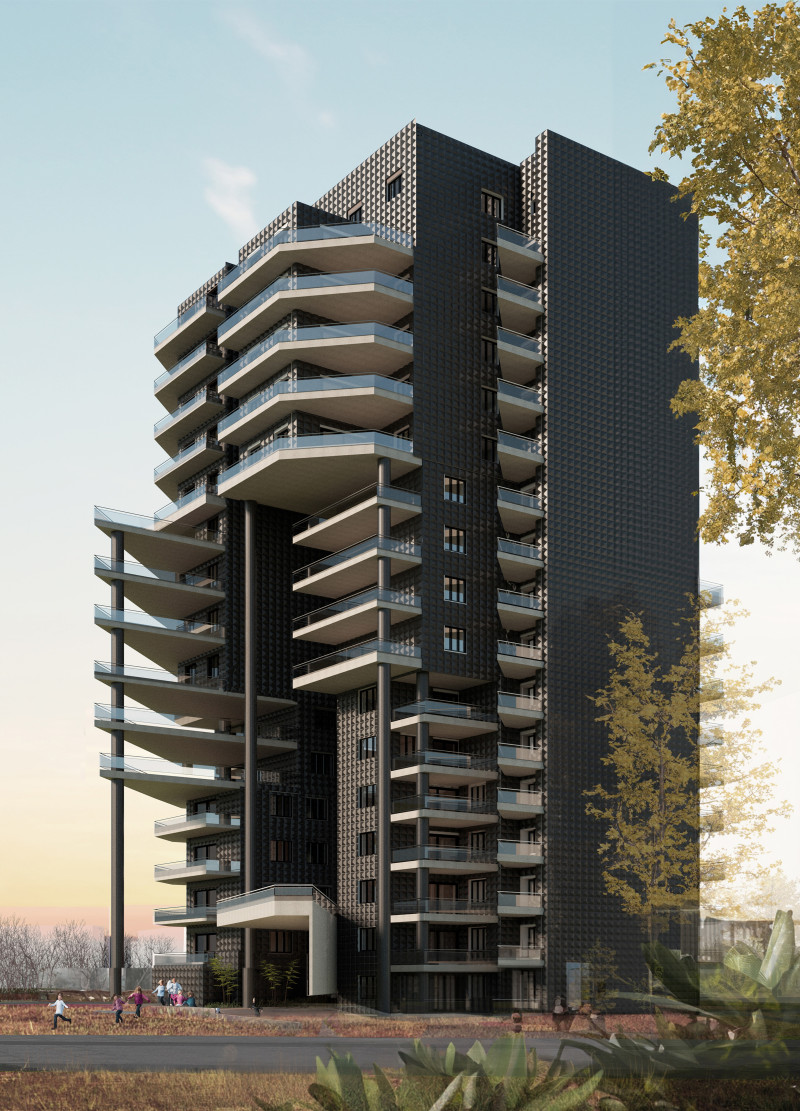5 key facts about this project
The architectural design employs a cohesive form that balances functionality with visual appeal. The layout is characterized by a logical flow of spaces, allowing seamless transitions between areas. Each element within the design has been carefully considered to enhance the overall user experience, whether it is through open common areas that promote socialization or private nooks that foster focus and tranquility. The use of large windows invites natural light into the interior, creating a warm and inviting atmosphere while simultaneously establishing a strong connection with the outdoors.
Materiality plays a significant role in the overall design and is indicative of the project’s commitment to sustainability. The building employs a combination of [list specific materials used, e.g., wood, steel, glass], each chosen not only for its aesthetic qualities but also for its ecological footprint. For instance, the use of locally sourced timber minimizes transportation emissions and supports regional economies. Glass elements create transparency and openness, allowing views of surrounding landscapes, while also contributing to energy efficiency through careful orientation and shading strategies.
A unique aspect of the project is the incorporation of [describe any special design feature, e.g., green roofs, passive solar design, community gardens]. This element not only enhances the building’s ecological viability but also serves as a functional space for residents or users to engage with nature, fostering a sense of community. Additionally, the design addresses contemporary environmental challenges by implementing rainwater harvesting systems and utilizing renewable energy sources, which reduce operating costs and ecological impact.
The architectural style reflects an adaptive approach that respects historical context while embracing modernity. The building’s facade, for instance, features a blend of traditional materials with contemporary design techniques, creating an interesting dialogue between old and new. This thoughtful juxtaposition not only enriches the visual experience but also reinforces the notion that architecture can tell a story of its place and time.
Moreover, the project places a strong emphasis on creating inclusive spaces accessible to all users. Care has been taken to ensure that pathways, entrances, and communal areas are designed to cater to individuals of varying abilities. This focus on accessibility reaffirms the building’s role as a community hub, where all individuals feel welcomed and valued.
The landscaping surrounding the building complements the architectural design, using native plants to enhance biodiversity and reduce water usage. This environmentally conscious approach emphasizes the project's commitment to creating a sustainable footprint while providing pleasant outdoor spaces for users to enjoy.
In summary, this architectural project serves as more than just a building; it is a model for how thoughtful design can facilitate community engagement, environmental responsibility, and aesthetic harmony. Readers are encouraged to explore further details by reviewing the architectural plans and sections, which reveal the intricacies of the design process and illustrate the innovative architectural ideas that underpin this project. Understanding the nuances of the design will provide deeper insights into its significance and the thoughtful considerations that shaped its realization.


























